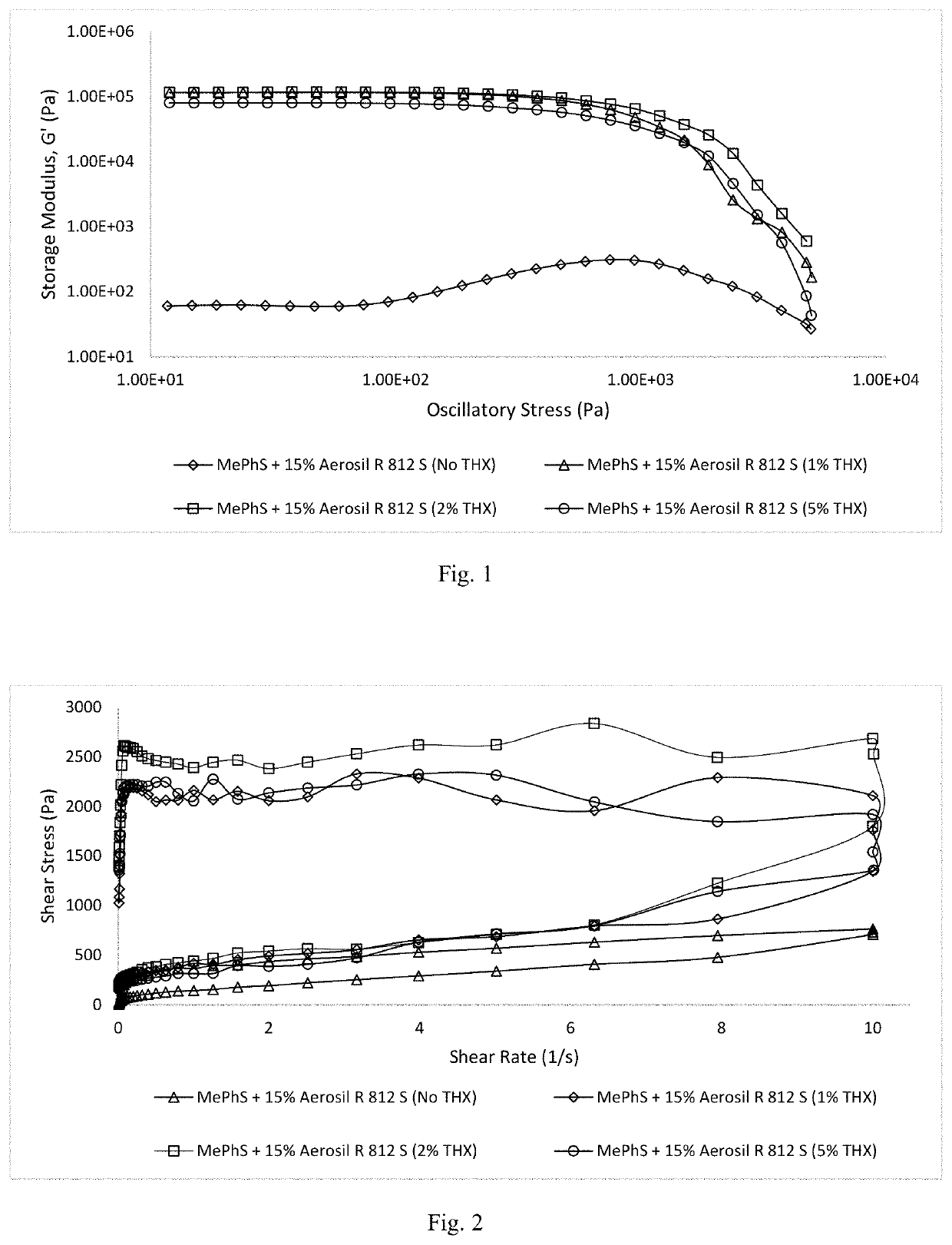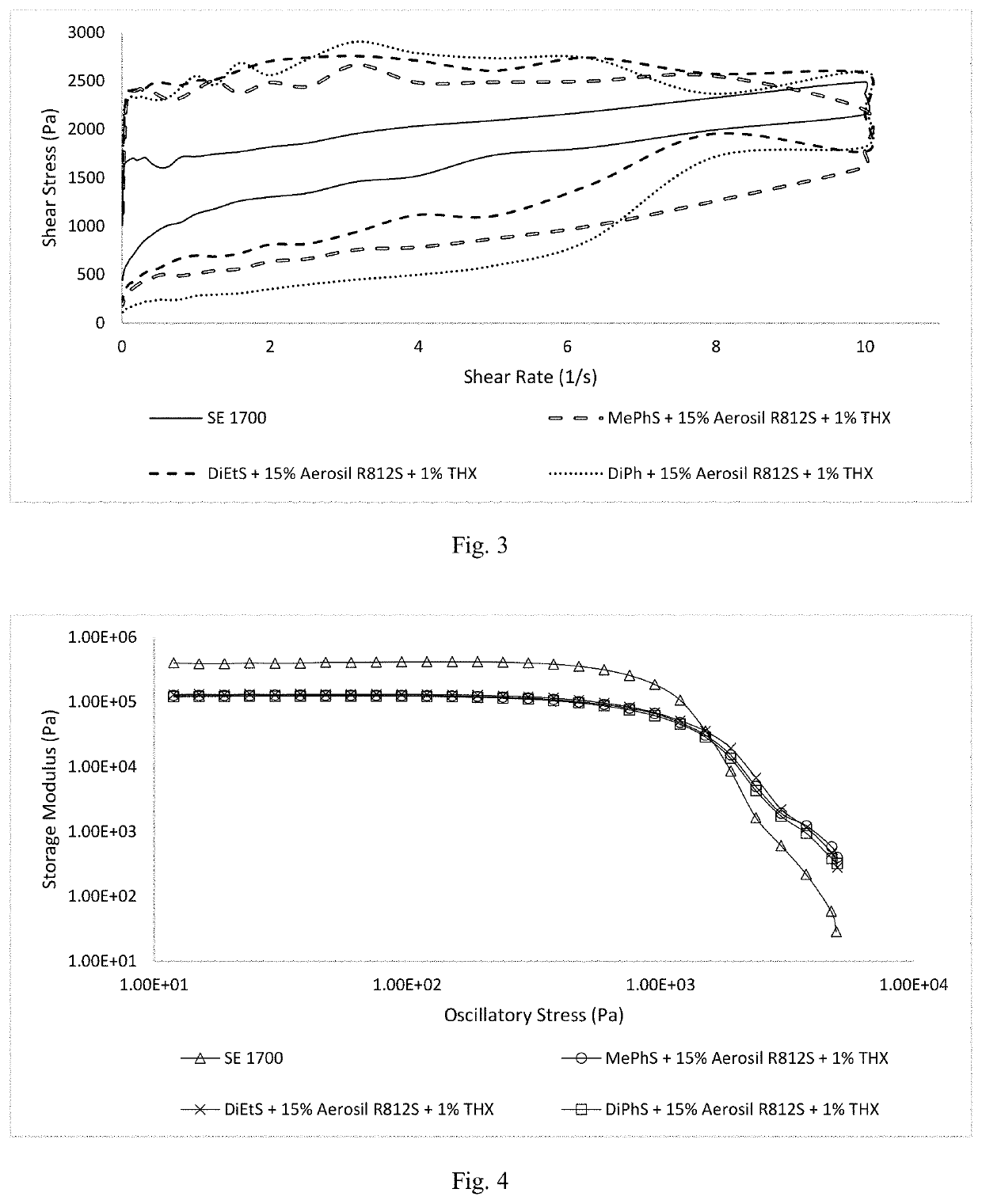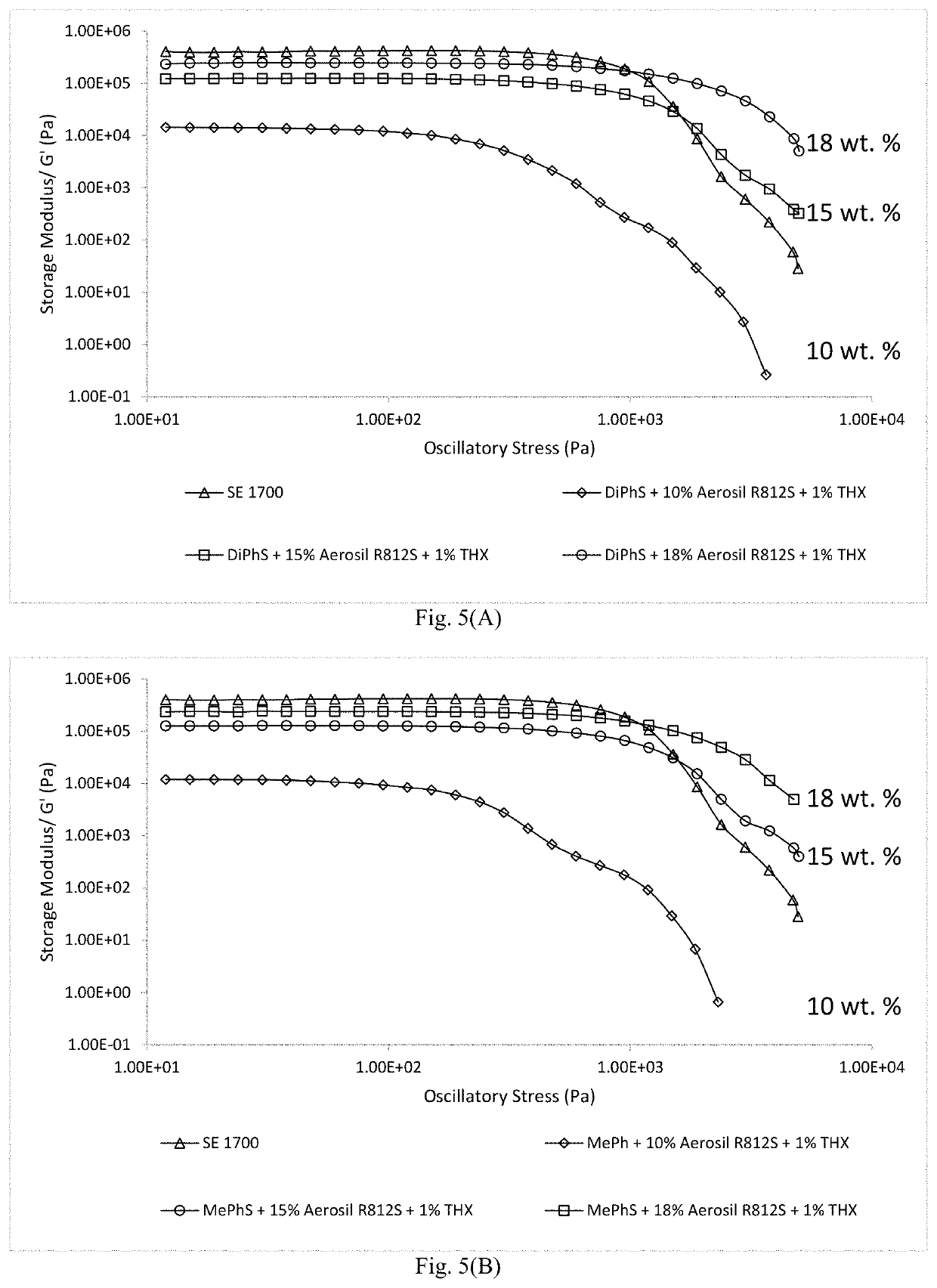Thixotropic polysiloxane pastes for additive manufacturing
a technology of thixotropic polysiloxane and additive manufacturing, which is applied in the field of thixotropic polysiloxane pastes for additive manufacturing, can solve the problems of short life, easy reaction, and rapid progress of reaction,
- Summary
- Abstract
- Description
- Claims
- Application Information
AI Technical Summary
Benefits of technology
Problems solved by technology
Method used
Image
Examples
example 1
Materials
[0078]The materials used in the following Examples were obtained from the sources described in this paragraph. Methylhydrido-co-dimethylsiloxane crosslinker (“MeHS” HMS-151; MW=1800-2000; 15-18% MeHS; average Si—H functionality of 4; trimethylsiloxy-terminated) was purchased from Gelest, Inc. (Morrisville, Pa.). BLUESIL™ THIXO ADD 22646 thixotropic additive was obtained from Elkem Silicones (East Brunswick, N.J.). Hexamethyldisilazane-treated (trimethylsilylated) AEROSIL® R 812 S fumed silica filler was purchased from Evonik (Olmsted, Ohio). Hydrosilylation catalysts platinum(II) acetylacetonate (“Pt(AcAc)2”) and trimethyl(methylcyclopentadienyl)-platinum(IV) (“MeCpPtMe3”) were purchased from Sigma Aldrich (St. Louis, Mo.). Diethyl azodicarboxylate, DEAD, was purchased from Alfa Aesar (Ward Hill, Mass.), and 1,3-dioxolane (99.5% stabilized) was purchased from Acros Organics (Pittsburgh, Pa.). All commercial materials were used as received.
example 2
Polymer Synthesis
[0079]In the Examples that follow, three different a,w-dimethylvinylsilyl-terminated terpolysiloxanes (A, B and C of Reaction Scheme 1) were used as base polymers for paste preparations. The base polymers each included 0.3 mol % of methylvinylsiloxy- (“MeViS”) repeat units, varying amounts (y) of crystallization disrupting diphenylsiloxy- (“DiPhS”; 3.6 mol % in Polymer A), methylphenylsiloxy- (“MePhS”; 4.4 mol % in Polymer B), or diethylsiloxy-(“DiEtS”; 7 mol % in Polymer C), and the rest (i.e., 93-96 mol %, respectively) dimethylsiloxy-(“DiMeS”) repeat units. All three terpolymers were prepared by anionic ring opening / equilibration polymerization of the corresponding mixtures of cyclosiloxanes, as shown in Reaction Scheme 1 and as described previously by:
iv. A. Zlatanic, D. Radojcic, X. Wan, J. M Messman, P. R. Dvornic, Suppression of Crystallization in Polydimethylsiloxanes and Chain Branching in Their Phenyl-containing Copolymers, Macromol. 50 (2017) 3532-3543.
v....
example 3
Paste Preparation
[0080]All pastes were compounded using a FlackTek DAC 150.1 FV SpeedMixer™, a dual asymmetric centrifugal mixer, from FlackTek Inc., Landrum, S.C. In a typical preparation, terpolymer base, crosslinker, thixotropic additive and catalyst-inhibitor mutual solution were added to a mixing cup, followed by successive additions of trimethylsilylated AEROSIL® R 812 S fumed silica filler in small portions. After addition of each filler increment the pastes were mixed for 20 sec at 3,000 rpm until the total desired amount of filler was added. Once the final portion of filler was added, the pastes were mixed a final time for 1 min at 3,000 rpm. 50 g sample batches were compounded with filler in 10, 15, and 18 wt. % of samples, respectively.
[0081]Unless otherwise stated below, the following quantities were utilized:[0082]Thixotropic additive: 1.0% by weight (based on total compositional weight);[0083]Crosslinker: supplied at 1:1 [Si—H]:[Si—Vi];[0084]Catalyst: 0.0125% by weight...
PUM
| Property | Measurement | Unit |
|---|---|---|
| mol % | aaaaa | aaaaa |
| mol % | aaaaa | aaaaa |
| mol % | aaaaa | aaaaa |
Abstract
Description
Claims
Application Information
 Login to View More
Login to View More - R&D
- Intellectual Property
- Life Sciences
- Materials
- Tech Scout
- Unparalleled Data Quality
- Higher Quality Content
- 60% Fewer Hallucinations
Browse by: Latest US Patents, China's latest patents, Technical Efficacy Thesaurus, Application Domain, Technology Topic, Popular Technical Reports.
© 2025 PatSnap. All rights reserved.Legal|Privacy policy|Modern Slavery Act Transparency Statement|Sitemap|About US| Contact US: help@patsnap.com



